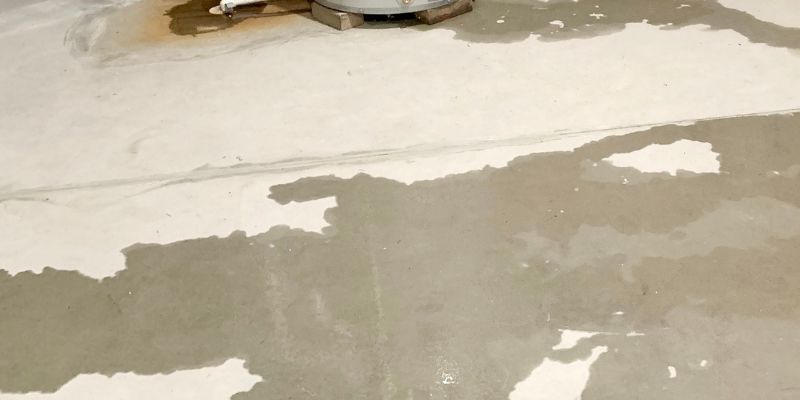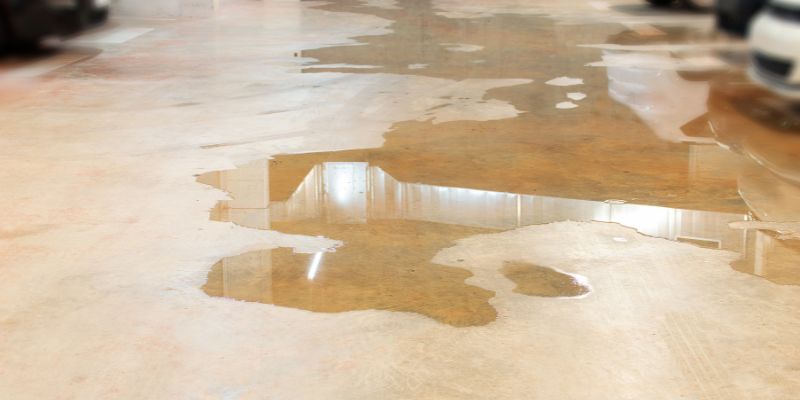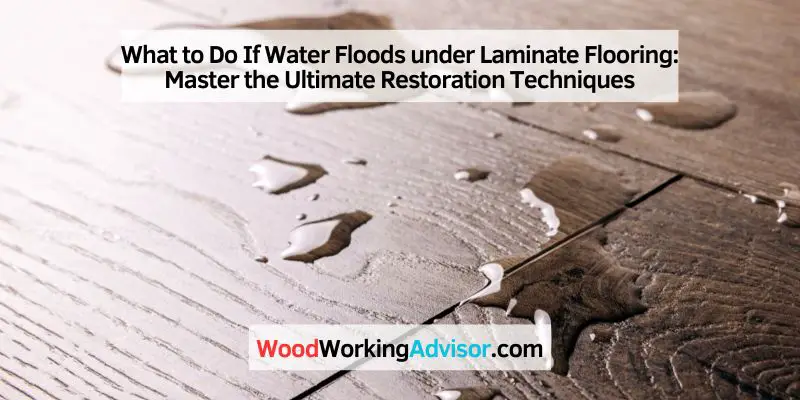To fix water damage under laminate flooring, immediately remove the affected planks and dry the area thoroughly. It is crucial that you take action quickly to prevent further damage and mold growth.
Water damage can be a nightmare, especially when it seeps under your laminate flooring. Whether it’s due to a plumbing leak or a spill that went unnoticed, ignoring the problem can lead to costly repairs and health hazards. However, if you act swiftly and follow the right steps, you can mitigate the damage and salvage your laminate flooring.
We will provide a straightforward guide on what to do if water gets under your laminate flooring, ensuring that you can address the issue efficiently and effectively. By applying the necessary measures promptly, you can prevent moisture-related complications and preserve the beauty of your flooring. So, let’s dive right in and learn how to tackle this troublesome situation.
Realization The Causes Of Water Flooding
Water flooding can be a nightmare for laminate flooring, causing unsightly warping, discoloration, and potential damage to the subfloor. Understanding the causes of water flooding is crucial to effectively addressing the issue and minimizing potential damage. By identifying potential sources of water flooding and determining the extent of the water damage, you can take appropriate steps to prevent further harm. Let’s explore these aspects in more detail.
Identifying Potential Sources Of Water Flooding
It’s important to identify the potential sources of water flooding in order to prevent future incidents. By understanding the likely culprits, you can take preventive measures to keep your laminate flooring safe. Here are some common sources to consider:
- Leaking pipes or plumbing fixtures
- Appliance malfunctions, such as dishwasher or washing machine leaks
- Roof or window leaks during heavy rain
- Foundation cracks leading to water seepage
- Flooding from natural disasters or severe weather conditions
Determining The Extent Of The Water Damage
Once water has infiltrated your laminate flooring, it’s crucial to determine the extent of the damage to take appropriate action. Here’s how you can assess the situation:
- Inspect the affected area closely to identify visible signs of damage, such as swelling, warping, or discoloration on the surface of the laminate planks.
- Check for moisture underneath the flooring by gently lifting a corner of a laminate plank. If moisture is present, it indicates significant water damage.
- Use a moisture meter to measure the moisture content of both the laminate flooring and the subfloor. This will help you gauge the severity of the damage and decide on the necessary repairs.
- If the water damage is extensive or there is mold growth, it’s advisable to seek professional help to prevent further complications.

Immediate Steps To Take When Water Floods Under Laminate Flooring
Water damage can quickly become a nightmare, especially when it seeps under your laminate flooring. Acting swiftly is crucial to minimize the potential damage. In this blog post, we’ll walk you through the immediate steps you should take when water floods under laminate flooring. By following these steps, you can prevent further issues and protect your flooring investment.
Shutting Off The Water Source
The first and foremost step in dealing with a water leak under your laminate flooring is to shut off the water source. This could be a valve under the sink, behind the toilet, or near the water heater. By cutting off the water supply, you’ll prevent additional water from entering the affected area and causing further damage.
Removing Furniture And Items From The Affected Area
Once the water source is turned off, it’s essential to remove any furniture or items from the affected area. This not only helps prevent additional damage to the furniture but also allows for better access to the floor. Clear the area as much as possible, ensuring that no objects obstruct the restoration process.
Extracting Standing Water
The next step is to extract any standing water from your laminate flooring. Standing water can quickly seep into the planks, causing them to warp, buckle, or even separate. Here are a few methods you can consider for extracting standing water:
- Use a wet/dry vacuum cleaner to suck up the water from the floor.
- Place absorbent towels or mops on the affected area and gently press down to soak up the water.
- Alternatively, you can rent or purchase a commercial water extractor specifically designed for larger-scale water removal.
Remember to work in small sections, extracting water thoroughly before moving on to the next area. It’s crucial to remove as much water as possible to prevent further damage to your laminate flooring.
By following these immediate steps, you can effectively address water that has flooded under your laminate flooring. Remember, time is of the essence when it comes to water damage, so don’t delay in taking action. However, keep in mind that these steps are suitable for addressing small incidents. For more extensive water damage, it’s best to seek professional help to ensure a thorough restoration of your laminate flooring.
Drying Out And Restoring The Laminate Flooring
If water has seeped under your laminate flooring, it’s crucial to act quickly to prevent further damage and restore the flooring. Here are the steps you need to follow:
Assessing The Condition Of The Laminate Flooring
Before deciding on the best course of action, carefully assess the condition of the laminate flooring. Look for signs of warping, bulging, or discoloration. If the damage is limited to a small area, you may be able to dry it out without replacing the entire floor.
If the water has been present for an extended period or the damage is extensive, it may be necessary to consult a professional for a thorough evaluation. Their expertise will help determine the extent of the damage and guide your restoration efforts.
Once you have assessed the condition of the flooring, you can proceed with drying it out.
Using Dehumidifiers And Fans For Drying
Removing moisture from under laminate flooring is crucial to prevent mold and further damage. Start by thoroughly cleaning the affected area by removing any standing water or debris. Use a wet/dry vacuum, mop, or towels to absorb excess water.
After removing the visible moisture, employ dehumidifiers and fans to facilitate the drying process. Place dehumidifiers strategically around the room to extract lingering moisture from the air. Additionally, position fans to circulate air and promote efficient drying.
Make sure to keep doors and windows open to enhance air circulation. Regularly monitor the progress and check for any signs of mold growth during the drying period.
Replacing Damaged Flooring
If the laminated flooring has sustained irreversible damage or shows signs of mold growth, you may need to replace the affected area or possibly the entire floor. Contact a professional flooring installer to assess the situation and provide guidance on the replacement process.
Remember to document the damage and take photographs for insurance purposes before removing any flooring. This evidence will assist you in filing a claim if necessary.
When it comes to restoring laminate flooring affected by water damage, the key is acting swiftly. Assess the condition of the flooring, use dehumidifiers and fans to dry the area, and consult a professional if needed. By following these steps, you can restore your laminate flooring and prevent extensive damage.
Preventing Future Water Damage
Water damage can wreak havoc on your laminate flooring, causing warping, swelling, and even mold growth. To protect your investment and prevent future water damage, implementing a proactive approach is essential. By identifying and fixing the underlying issue, using waterproof sealant or underlayment, and conducting regular maintenance and inspections, you can ensure the longevity and durability of your laminate flooring.
Identifying And Fixing The Underlying Issue
If water has already penetrated your laminate flooring, it’s crucial to identify and address the underlying issue to prevent future damage. Here’s how:
- Start by locating the source of water – is it a leaking pipe, an overflowing appliance, or excessive humidity in the room?
- Once the source is identified, fix the problem immediately to prevent recurring water damage. If it’s a leaking pipe, call a plumber. If it’s an appliance issue, consult the manufacturer or an expert for repairs.
- Address any structural concerns that may be causing water infiltration, such as cracks in the foundation or gaps in windows or doors.

Using Waterproof Sealant Or Underlayment
Another effective method for preventing water damage to laminate flooring is by using waterproof sealant or underlayment. Here’s how it can be done:
- Apply a waterproof sealant around the edges of the laminate flooring, including baseboards and transitions, to create a barrier against potential water intrusion.
- Consider using a waterproof underlayment beneath the laminate flooring during installation. This additional layer provides an extra level of protection, preventing water from seeping through the cracks.
Regular Maintenance And Inspections
Maintaining a regular maintenance and inspection routine is crucial for preventing future water damage. Follow these steps:
- Regularly clean your laminate flooring using a damp mop or cloth, ensuring no excess moisture is left behind.
- Keep an eye out for signs of water damage, such as discoloration, warping, or a musty odor. If any damage is detected, address it promptly.
- Inspect areas prone to water exposure, such as bathrooms, kitchens, and laundry rooms, more frequently for potential issues.
By following these preventative measures, you can significantly reduce the risk of water damage to your laminate flooring. Remember, being proactive is key to maintaining a beautiful and long-lasting floor that withstands the test of time.
Conclusion
To summarize, water damage is a serious issue that can affect laminate flooring. However, there are steps you can take to prevent and mitigate the damage. Acting quickly and efficiently is crucial to avoid long-term consequences. Remember to thoroughly dry the affected area, inspect for further damage, and consider professional assistance if needed.
By addressing water under laminate flooring promptly, you can preserve its integrity and extend its lifespan.


